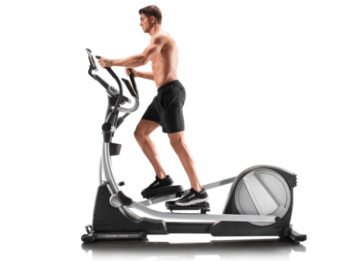Two…
Three…
Four…
Imagine those numbers above are mere seconds out of your day. Now imagine that in that small amount of time you could have helped raise the bar on your fitness levels.
This may sound crazy, four seconds can’t possibly be long enough to improve your health, but new research shows that you can do just that.
Imagine your regular morning…you sit down at your desk, table, or whatever you’re using these days, and prepare to start your day. You then remain in that chair while you tackle the world and check items off your to-do list.
Those hours spent sitting, whether you’re working, eating meals or relaxing on the couch after work, add up really fast. And they take a toll on your overall health and fitness. Risk of heart disease, diabetes, metabolic disorders and weight gain increase with extended periods of sitting, or a sedentary lifestyle.
In addition, when you sit for extended periods of time, your body adjusts to that level of activity, or lack thereof. When this happens your body develops “exercise resistance”, which makes it harder for your body to burn fat.
At that point, it takes longer for your body to kick in to fat burning mode even when you do exercise.
So, what can you do to counteract the negative effects of sitting? You can fight it 4 seconds at a time.
A new study from the University of Texas at Austin has found that even very small bouts of intense exercise can help offset those effects.
The study recruited eight volunteers, four men and four women to participate in the study. Once they arrived, the volunteers were told to sit, for eight hours.
During that eight hour period, the participants completed four-seconds of exercise five times per hour, for a total of 20 seconds of exercise per hour.
This exercise involved sprints performed on a specialized stationary bike called an inertial load ergometer. This type of bike allows riders to reach their maximum energy exertion very quickly, making it perfect for short, high intensity exercise. Developed specifically for this study by Coyle, he refers to it as his “power cycle”!
The results of the study showed that 4-second sprints performed five times per hour helped improve fat metabolism and lowered triglyceride levels in the bloodstream. Triglycerides are the main component of the fat that is stored in your body.
As Coyle explained, “the key things with fat metabolism is that you have to activate your muscles; you can’t let them be inactive for very long. These sprints are just an effective way of doing that.”
You might be asking yourself, “Why would I keep jumping up during the day when I can just workout like normal, or at least try to, after I get home from work?”
The answer is that even those small bouts of exercise can really make a difference in overall health precisely because you’re doing them throughout the day.
“We need to clear that triglyceride from the bloodstream and if you’ve been sitting for long, you won’t have that increased clearance as a result of the exercise. As far as fat metabolism goes, that bout of exercise done in the afternoon is not going to be very effective,” says Coyle.
That doesn’t mean that you shouldn’t still go to the gym or get out and pound the pavement to get your muscles going and your heart pumping. But Coyle’s research points out that when we look at fat metabolism, exercise throughout the day could be more beneficial.
Running sprints, even in place, is an option that may work for some, but not necessarily for everyone. If you’re a person that can’t sprint under normal circumstances for any reason, hopping out of your desk chair and running as fast as you can…probably not your best bet.
Stairs are another option that may work for some but not for everyone based on the risk of injury and impact to joints.
When thinking about these options he reached the conclusion, “that works ok for college students, but once you get a little older, we could see when we were doing middle-aged people that that wasn’t going to work. People were getting strained muscles.”
Coyle determined that having a machine that stays in one place is also the most convenient for an environment where you are also working. The accessibility is key to making sure you’re hitting those sessions.
Hence the “power bike”.
But you don’t need to own one of Coyle’s specialized bikes, any stationary bike will do the same thing. You just want to make sure that you have enough resistance to force your muscles to work from the start.

NordicTrack SpaceSaver SE7i
If a stationary bike isn’t really your cup of tea, you could consider using your elliptical. Cranking up the resistance on your elliptical and doing a four-second sprint will get you the same results with a machine that you may already know and love.
There are a lot of great machines out there for both your 4 second workouts and your longer, more traditional style sweat sessions too.
Next time you sit down to start your day, include setting an alarm to remind you of your mini-workouts. What may not seem like much can have a huge impact.
Sources:
https://journals.lww.com/acsm-msse/Abstract/9000/Hourly_4_s_Sprints_Prevent_Impairment_of.96302.aspx Hourly 4-s Sprints Prevent Impairment of Postprandial Fat Metabolism from Inactivity: Wolfe, Anthony S.; Burton, Heath M.; Vardarli, Emre; Coyle, Edward F.; 2020
https://www.healthline.com/health-news/4-second-workout#Sedentary-lifestyle-can-increase-health-risks How 4-Second Workouts Can Counteract Sitting All Day: Gigen Mammoser; May 2020